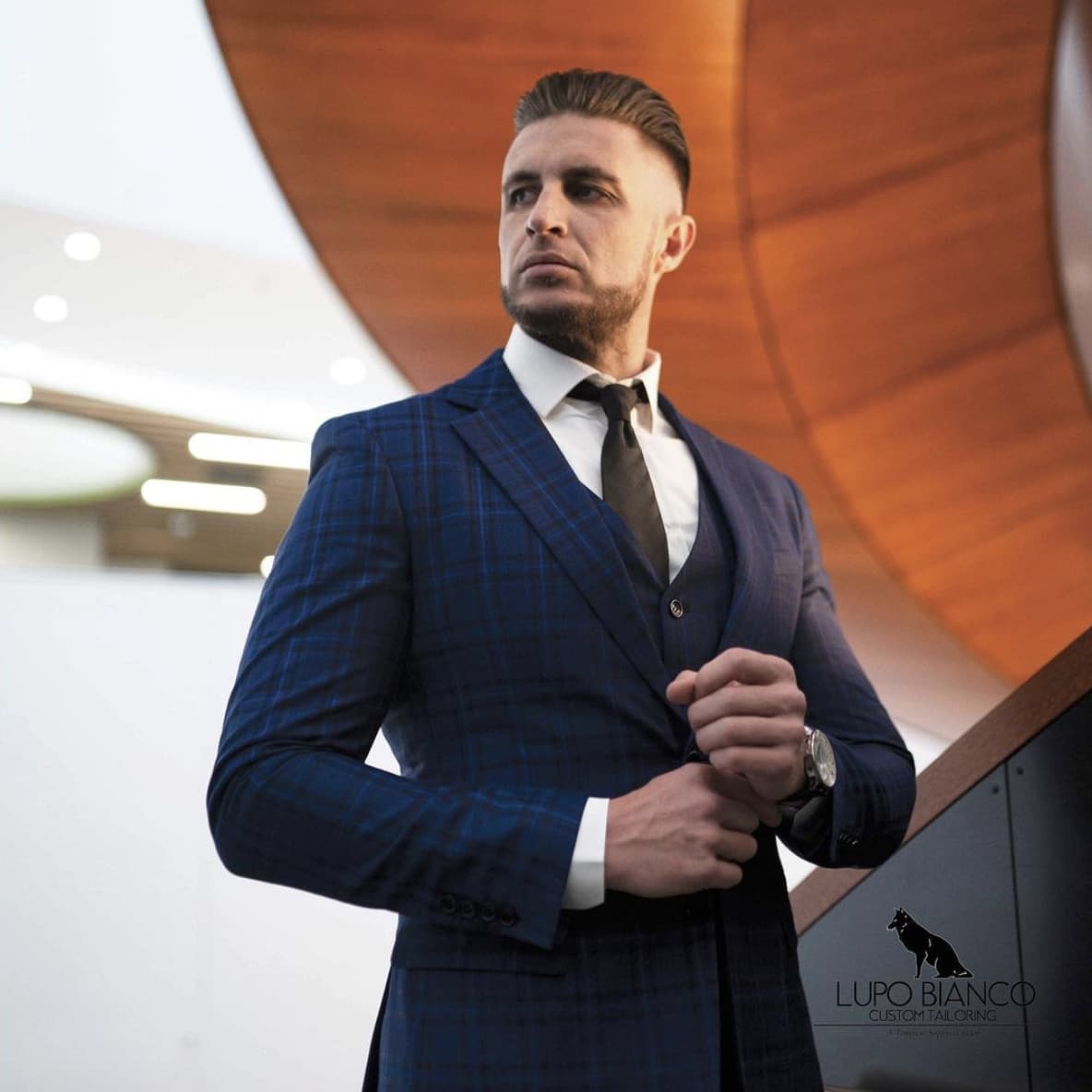The Necessary Guide to Selecting the Ideal Tailored Fit for You
Selecting the perfect tailored suit is a nuanced process that requires careful consideration of numerous elements, consisting of fabric kinds, body forms, and healthy choices. Understanding the attributes of products such as woollen and bed linen can significantly affect your choice, while an exact assessment of your physique guarantees the match accentuates your best features. Furthermore, individualizing your fit through color and style selections can improve your expert image. The equilibrium in between high quality and budget plan continues to be a critical aspect. As we explore these components further, the path to your best tailored suit will certainly come to be significantly clear.
Understanding Suit Fabrics
When choosing the ideal tailored match, how does one navigate the varied variety of materials offered? The option of fabric considerably influences the suit's appearance, comfort, and sturdiness. Usual options consist of wool, cotton, bed linen, and artificial blends, each providing distinctive attributes suited for various events and environments.
Woollen is the most preferred choice for customized suits, celebrated for its convenience and capacity to drape elegantly. It provides a series of weights, from light-weight for summertime to much heavier choices for wintertime. Cotton, while breathable and comfy, has a tendency to wrinkle much more quickly, making it appropriate for laid-back or semi-formal settings.
Linen is an additional alternative, renowned for its lightweight and breathable properties, ideal for cozy climate. It likewise often tends to wrinkle rapidly, which can produce a relaxed visual. Synthetic blends, commonly a mixture of polyester and woollen, offer added toughness and resistance to wrinkling, making them functional for everyday wear.
Inevitably, when picking a textile, consider the fit's planned use, the environment, and personal convenience. An educated decision not just improves the suit's functionality however likewise adds to overall confidence and design.
Establishing Your Physique
Identifying your physique is necessary for selecting a tailored suit that improves your figure and guarantees a complementary fit. Recognizing your body form enables you to make educated options about fit designs, cuts, and textiles that match your distinct shape.
Those with a triangular body type have bigger hips and a narrower top body, while the inverted triangular features more comprehensive shoulders and a narrower midsection and hips. The oval body type usually has a fuller midsection, and the shapely is defined by a well-proportioned bust and hips with a defined midsection.
Determining your body type includes analyzing your proportions and recognizing just how they affect your general appearance. Take measurements of your shoulders, chest, midsection, and hips. This information will guide you in choosing a match that accentuates your strengths while minimizing any kind of locations of worry. Keep in mind, the goal is to attain a balanced appearance that radiates self-confidence and sophistication.
Picking the Right Fit
The fit of a tailored suit is extremely important, as it straight influences both comfort and appearance. Attaining the best fit includes several crucial aspects, consisting of shoulder alignment, breast measurement, and sleeve length (TAILORED SUITS PERTH). The shoulders ought to preferably rest level without any bulging or pinching, providing a structured look that enhances the overall silhouette

Sleeve length is similarly important; the cuff must subject a part of the t shirt sleeve, usually around half an inch, permitting for a harmonious blend of textures and shades.
Pant fit must also be very carefully taken into consideration. The waist should sit easily without drooping or digging in, while the length should just skim the tops of your footwear, providing a clean finish.
Customization Options
Customization options play a critical role in raising a customized suit from standard to extraordinary, enabling individuals to reveal their unique design and choices. The procedure starts with fabric option, where a varied range of materials-- such as wool, bed linen, or cashmere-- offers opportunities to reflect personal preference and match the occasion.
Following, consider color and pattern choices. Timeless choices like navy or charcoal are timeless, while bolder tones and detailed patterns can display individuality. Customized tailoring also permits changes to lapels, pocket designs, and switches, improving both aesthetics and functionality.
The fit is further improved through customized measurements, guaranteeing that every facet of the suit complements the wearer's figure. Details such as monogramming can add a touch of individuality, creating a suit that really feels distinctively yours.

Budgeting for Your Match
Budgeting for your match involves careful factor to consider of numerous variables that can affect the general expense. First and leading, the textile plays a significant duty in pricing. Top quality products such as wool, silk, or cashmere usually command higher costs, while artificial blends might be more economical.
Next, take into consideration the tailoring process itself. Bespoke fits, which are made to your specific specifications, are usually much more costly than made-to-measure or off-the-rack alternatives. The degree of workmanship and information, including hand-stitched aspects, likewise influences the final rate.
Furthermore, it is critical to consider changes. Also a well-tailored fit may call for adjustments to accomplish the ideal fit - TAILORED SUITS PERTH. Alloting funds for these alterations can make sure that your financial investment settles in both comfort and appearance
Finally, do not ignore the significance of timing. Seasonal sales and promotions can offer considerable cost savings. Developing a clear budget while prioritizing your preferred functions will certainly lead you in making an enlightened selection without endangering high quality. Inevitably, buying a tailored match ought to reflect both your design and economic comfort.
Conclusion
